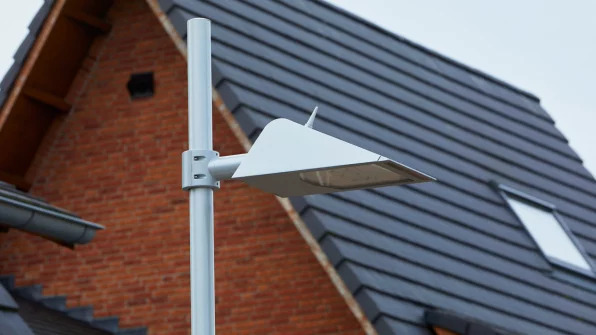
- Inspiring People -
- 5mins -
- 2,717 views
Bat-friendly Dutch district paints the town red every night
A Dutch town’s red street lights have been specially designed to ensure they don’t interfere with bats’ nocturnal behaviour, while being just as useful to humans as regular white or orange lights.
Calling Bat fans – lighting scientists develop LED street lamps that won’t disturb bats
If you visit the neighbourhood of Zuidhoek in the Dutch municipality of Nieuwkoop at night, the first thing you will notice is that pavement glows red. The neighbourhood, a new development of dozens of homes, was built next to a nature reserve home to threatened species of bats–and it’s the first place in the world to install these specially developed bat-friendly street lights. Bats can barely see red light if at all, compared to traditional artificial lights that disrupt their night activity. The lights are energy-efficient and save electricity with dynamic dimming and scheduling, and also don’t attract bugs as much as traditional lights. Bats are most active at night, and they play an essential role by pollinating plants in our food system, dispersing seeds, and feeding on insects.
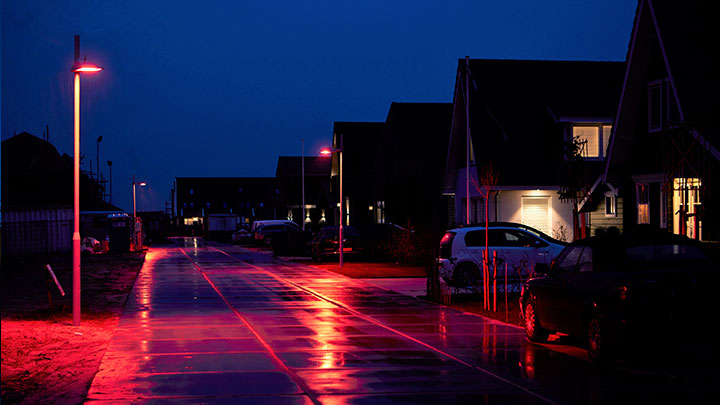
Both colour and wavelength were designed to ensure bats can enjoy the night
Thanks to its many rare and vulnerable animal and plant species, Zuidhoek in the municipality of Nieuwkoop in the Netherlands is part of the Natura 2000 network. In 2011 the municipality decided to convert Zuidhoek into a residential area by building 89 houses after assessing the environmental impact this. The research showed that it is an important feeding area for some rare bat species.
Therefore, before proceeding with the housing program, the municipality had to put some conservation measures in place. This had to include lighting that would not disturb the nocturnal feeding and nighttime activity of the bats.
THE RIGHT LIGHTING
“The key aspect of the project was to create a natural landscaping concept in which the housing program does not impact local wildlife.” says Robert Jan Vos, the Lighting Design Consultant who made the lighting plan for the residential area.
To ensure undisturbed night-time for the bat population living in Nieuwkoop, the municipality selected the dedicated Philips light recipe developed through extensive research together with the University of Wageningen and NGO’s active in the field.
Both the colour and the wavelength were designed to ensure bats can enjoy the night time as if there was no artificial lighting in place, while ensuring good visibility for residents living in the area. Therefore no compromise was made on safety.
To further optimise light levels, the municipality installed the Interact City remote light management system to ensure that light is only on when it’s needed.
Source: Philips
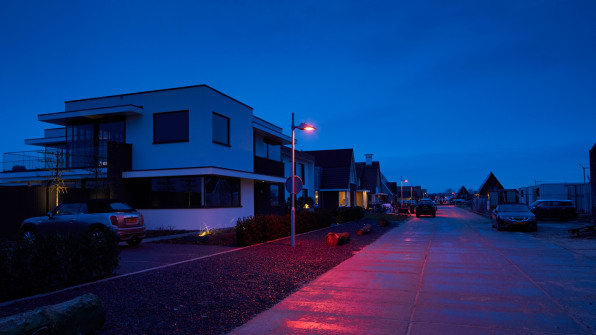
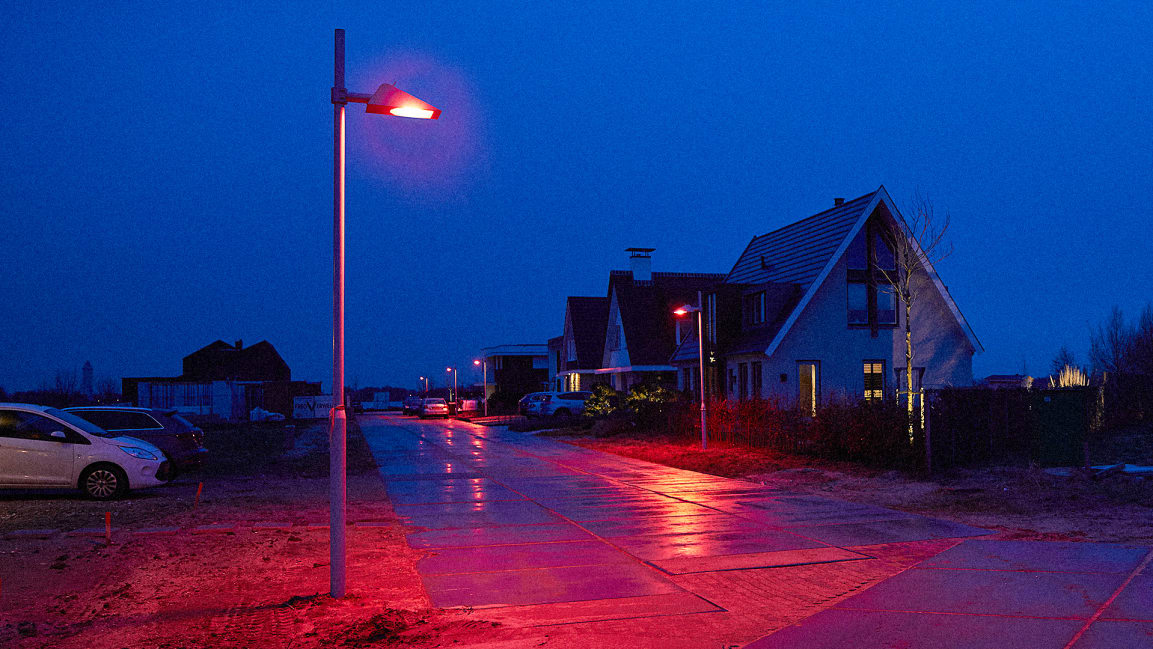
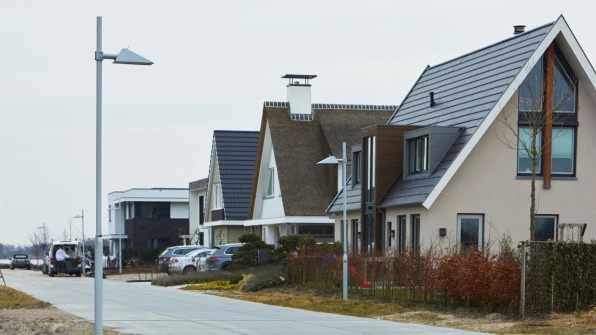
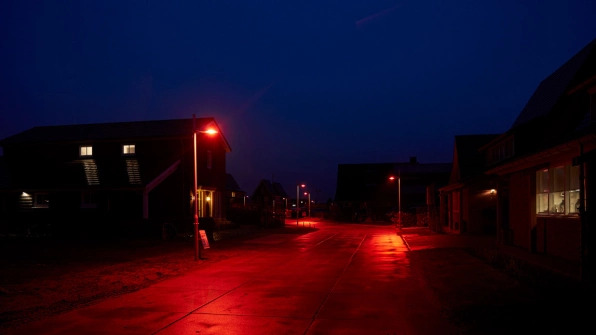
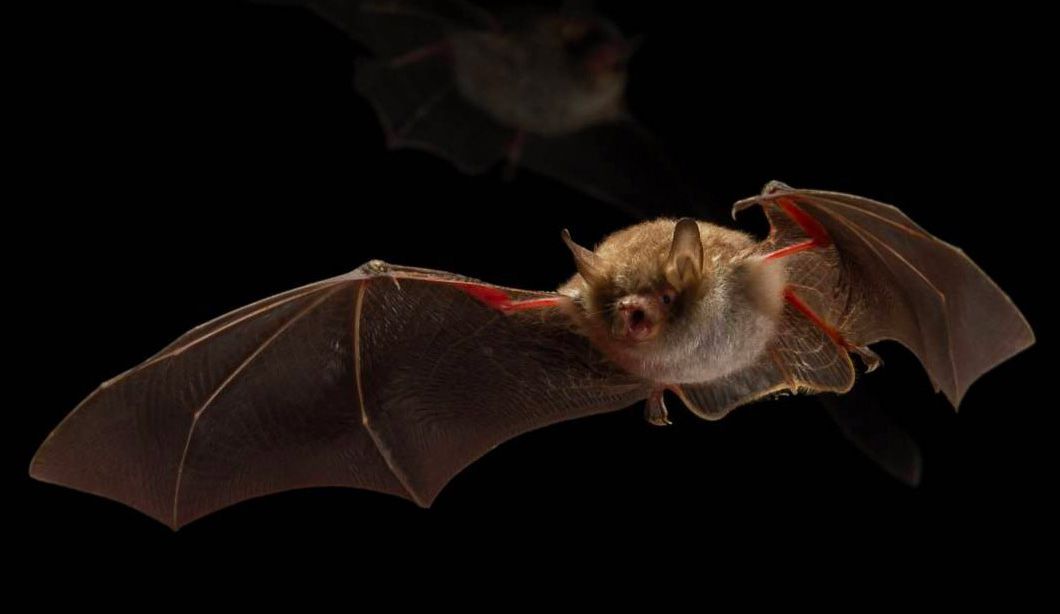
Why Would Anyone Want to Attract Bats and should I be afraid of them?
Did you know that bats are very helpful to humans? Bats eat lots of insects. With lots of bats eating lots of insects, there will be fewer insects to bug you. Farmers like bats because they can use fewer pesticides on their crops, which save the farmers lots of money.
In the tropics, fruit and nectar eating bats are important for dispersing seeds and pollinating flowers. In fact, more than 300 tropical plants depend on bats for seed dispersal and pollination. These plants include bananas, mangoes, avocados, date, and figs. By dispersing seeds, bats are helping rebuild rainforests that humans have cut down.
This might surprise you, but vampire bats are important to humans too. Vampire bats have a special chemical in their saliva that keeps blood from clotting. This allows them to easily drink blood from cows and pigs. Scientists studied this chemical and used it to develop medicine that helps humans that suffer from blood clots and strokes.
DON’T MIND BATS
Most people are afraid of bats because they think that all bats have rabies. Bats can get rabies like any other mammal. However, very few bats have rabies. And remember, you can only get rabies if a rabid animal bites you or if you come in contact with its saliva. That means you cannot get rabies just by looking at a bat.
Some people think that bats will get caught in your hair. This is also not true. Bats are excellent fliers and can easily avoid flying into your hair.
Source: askabiologist.asu.edu
